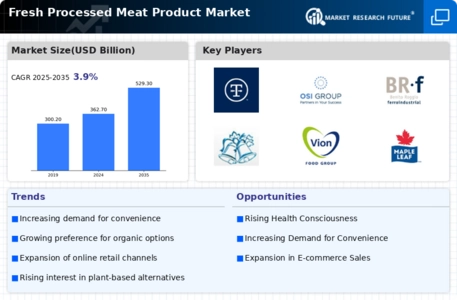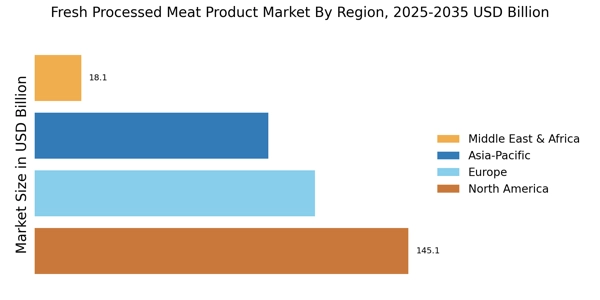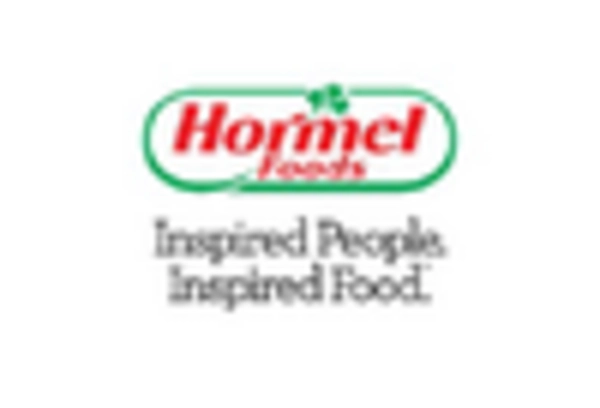The Fresh Processed Meat Product Market is characterized by a dynamic competitive landscape, driven by evolving consumer preferences, health consciousness, and sustainability concerns. Major players such as Tyson Foods (US), JBS (BR), and Cargill (US) are at the forefront, each adopting distinct strategies to enhance their market positioning. Tyson Foods (US) emphasizes innovation in product offerings, particularly in plant-based alternatives, while JBS (BR) focuses on expanding its global footprint through strategic acquisitions. Cargill (US), on the other hand, is investing heavily in supply chain optimization and digital transformation, aiming to improve operational efficiency and responsiveness to market demands. Collectively, these strategies contribute to a competitive environment that is increasingly focused on sustainability and consumer-centric products.
Key business tactics within the Fresh Processed Meat Product Market include localizing manufacturing and optimizing supply chains to enhance efficiency and reduce costs. The market structure appears moderately fragmented, with several key players exerting significant influence. This fragmentation allows for a diverse range of products and innovations, yet the collective strength of major companies like Smithfield Foods (US) and Hormel Foods (US) suggests a competitive balance that could shift towards consolidation as companies seek to leverage economies of scale.
In August 2025, Tyson Foods (US) announced a partnership with a leading technology firm to develop AI-driven solutions for meat processing. This strategic move is likely to enhance operational efficiency and product quality, positioning Tyson as a leader in technological integration within the industry. The focus on AI reflects a broader trend towards automation and data-driven decision-making, which could redefine operational standards across the sector.
In September 2025, JBS (BR) completed the acquisition of a regional meat processing company in Europe, thereby expanding its market presence and diversifying its product range. This acquisition is significant as it not only strengthens JBS's foothold in the European market but also aligns with its strategy to enhance supply chain resilience and meet growing consumer demand for locally sourced products. Such moves indicate a trend towards regional consolidation, which may reshape competitive dynamics in the coming years.
In July 2025, Cargill (US) launched a new line of organic processed meats, responding to the increasing consumer demand for healthier and more sustainable options. This initiative underscores Cargill's commitment to innovation and sustainability, positioning the company favorably in a market that is increasingly prioritizing health-conscious products. The introduction of organic lines may also compel competitors to adapt their offerings, further intensifying the competitive landscape.
As of October 2025, the Fresh Processed Meat Product Market is witnessing trends that emphasize digitalization, sustainability, and technological integration. Strategic alliances are becoming increasingly pivotal, as companies collaborate to enhance their capabilities and market reach. Looking ahead, competitive differentiation is likely to evolve from traditional price-based competition towards a focus on innovation, technology adoption, and supply chain reliability. This shift suggests that companies that prioritize these areas will be better positioned to thrive in an increasingly complex market.


















Leave a Comment